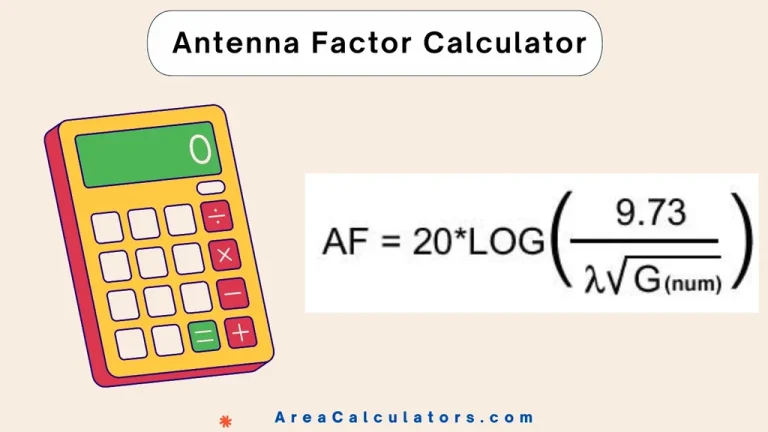Buoyancy Correction Calculator
To find buoyancy correction, subtract the product of the fluid’s density and the displaced volume from the object’s mass. This determines the corrected mass, accounting for buoyant forces.
To find buoyancy correction, subtract the product of the fluid’s density and the displaced volume from the object’s mass. This determines the corrected mass, accounting for buoyant forces.
The Buoyancy Correction Calculator make it easy for you to find out the corrected weight or mass of an object submerged in a fluid. This correction accounts for the effect of buoyant forces on the object, which affects its apparent weight. Therefore, it is essential in various fields like fluid mechanics, engineering, and marine applications.
BC = m – (ρ * V)
| Variable | Description |
|---|---|
| BC | Buoyancy Correction |
| m | Mass of the object |
| ρ | Density of the fluid |
| V | Volume displaced by the object |
Example 1:
Calculate the buoyancy correction for an object with a mass of 50 kg, a fluid density of 1,000 kg/m³, and a displaced volume of 0.02 m³.
| Step | Calculation |
|---|---|
| Calculate correction | BC = 50 – (1,000 * 0.02) |
| Result | BC = 30 kg |
Example 2:
For an object with a mass of 80 kg, a fluid density of 998 kg/m³, and a displaced volume of 0.05 m³, find the buoyancy correction.
| Step | Calculation |
|---|---|
| Calculate correction | BC = 80 – (998 * 0.05) |
| Result | BC = 30.1 kg |
A buoyancy correction calculator is a practical tool specifically designed to account for changes in weight due to buoyant forces in fluids like air or water.
So, when measuring objects, buoyant forces can cause slight deviations in accurate weight measurements, which is why a buoyancy correction factor becomes essential. This correction is especially relevant for precise experiments or measurements in physics, chemistry, or fluid dynamics.
To calculate buoyancy in water, it’s necessary to consider the object’s volume and the fluid density. The buoyant force can be determined using this relationship.
A buoyancy correction calculator app simplifies this task by automating these steps, offering more precise results without manual calculations. It’s helpful when measuring items submerged in water or heavy fluids, as it accurately adjusts weights.
In short, using a buoyancy correction calculator ensures accurate weight measurements by considering buoyant forces. It’s crucial for applications where even minor deviations can affect the final results.

To calculate CDAI, simply add the counts of swollen and tender joints, and include patient and evaluator global assessments to get the total score. The CDAI (Clinical Disease Activity Index) is a straightforward and widely used tool in medical field. It aims to assess the activity of rheumatoid arthritis (RA). Moreover, it facilitates the medical…

To calculate the antenna factor (AF), use the formula that relates the electric field strength (FS) and the voltage (V) measured at the antenna terminals. This formula helps determine the performance of an antenna in converting an electric field into a voltage signal. The Antenna Factor Calculator is a tool used to calculate the relationship…

To calculate bone age height prediction, multiply the bone age by the height correction multiplier and then add the height correction addition. This will give the predicted height. The Bone Age Height Calculator helps predict a child’s future height based on their bone age, current height, and other factors. Bone age is a measure of…

To calculate backup capacity, multiply the total data size by the redundancy factor and divide by 1−Compression Ratio. Backup capacity is essential for ensuring that data is properly stored and protected against loss, while considering redundancy and compression. The Backup Capacity formula helps calculate the total storage capacity required, taking into account the size of the…
To calculate the voltage, divide the power (P) by the current (I) in amps. The Amp to Volt Calculator is a practical tool that allows you to calculate the voltage (V) given the power (P) and the current in amps (I). This is commonly used in electrical engineering and energy calculations to determine the voltage…

To divide two complex numbers, multiply the numerator and denominator by the conjugate of the denominator. Then, apply the formula to divide the real and imaginary parts separately. The complex number division calculator helps in dividing one complex number by another. Actually, complex numbers are expressed in the form a+bia + bia+bi, where a is…